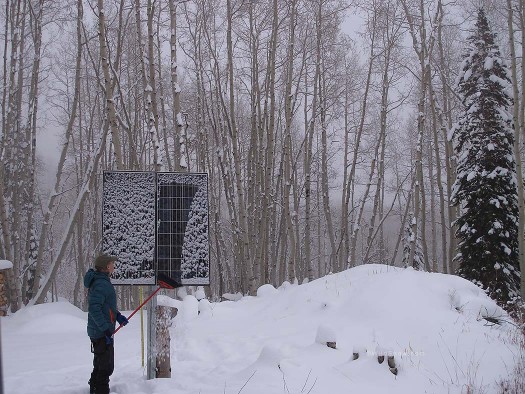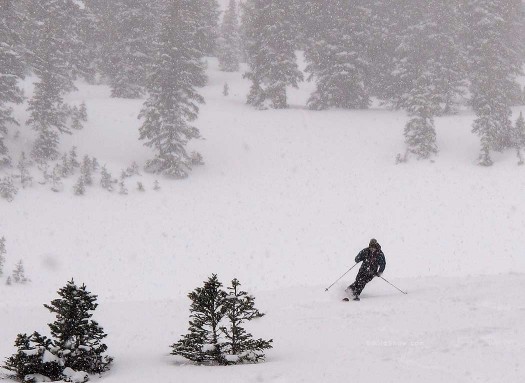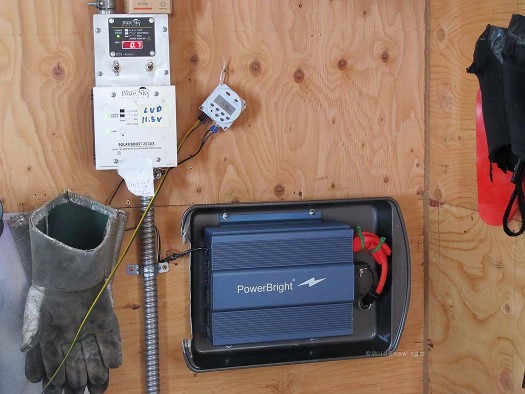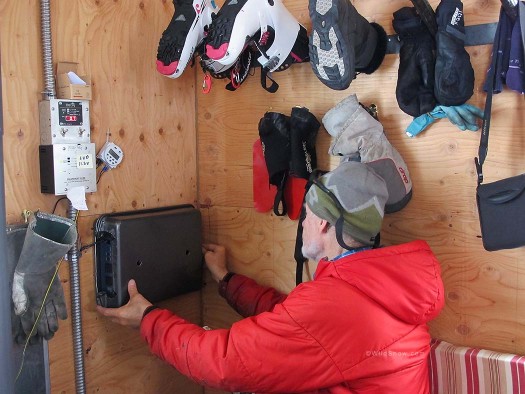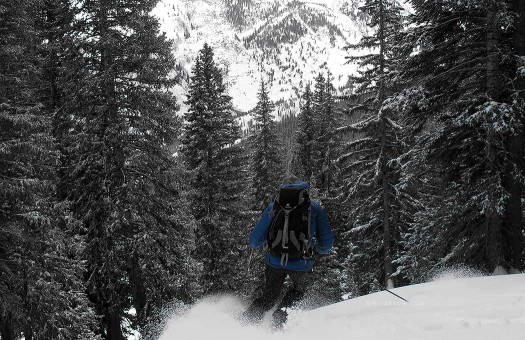Compared to last season’s dismal days of paper-thin snowpack, Central Colorado is off the hook. Local haunts around here are skiing like “mid-February” according to locals who suffered through last winter. About time.
We’ve of course been spending every day possible in the thick of it up at Wildsnow Field HQ. That sport plan is easier now that we’ve got satellite internet. Yeah, I know, “Why mess up your peaceful unwired days?” Answer: When you make your living as a blogger 24/7, you either have internet, or you stress out thinking about getting back online to defend yourself against hackers and get your work done. Relief has been found. I can report that our Hughes Net satellite internet installation has been working quite well. Now when we’re at 9,000 feet wading around in 14 inches of new Colorado cold smoke, why leave?
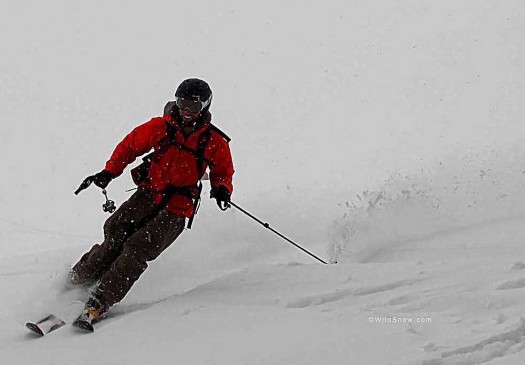
While out and about we made a Doug Stenclik sighting. That is difficult because here is a man who is never still. It's either multiple fast-laps or he's running back to work as co-owner of our local backcountry shop, Cripple Creek Backcountry. He knows what he's talking about.

To ski or to mod, always the dilemma at WildSnow. I'll admit that getting Hughes Net working off-grid was a challenge. The epic began with discovering a normal inverter didn't produce the correct power from our 12 volt PV system. So I ordered up a pure sine wave inverter, which then required a time consuming install to insure performance and make it safe. Beefy cables carry 12 volts to the inverter, cables in turn needed a rather large safety fuse, conduit, etc. The only place I could find to mount the inverter was on the wall above our battery box, so I made an enclosure for the inverter to cover the electrical connections and act as a fire shield. A sandwich of two lasagna pans worked perfectly, with vent holes here and there.
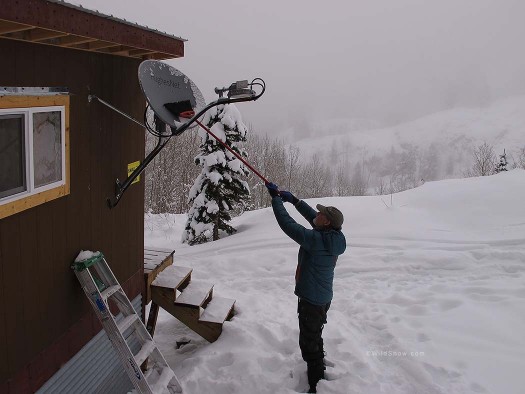
Hughes Net works amazingly well even with some dry snow on the dish, but (gently) cleaning it off improves performance. Wet snow or ice, not so good. The installer encouraged me to not do a roof mount. I'm glad we followed his advice. The dish is mounted on our tool shed reinforced wall. We'll see how well it stays aligned if the shed gets a few feet of snow weight shifting it around. One of the problems with Hughes is that dish alignment is critical. If it goes off by as little as 1/2 degree, kaput. It's possible but tedious for the owner to re-align his dish, better to just get an installer back to do the job correctly. But that's either expensive for a quick show, or a long wait for the service contract guy to show up. Better to do a bomber installation in the first place.
Beyond setting up the correct inverter, Hughes Net required a few other tweaks for what so far has been good performance. Our cable run is about 100 feet from the dish to the camping trailer, so we opted for thick RG11 coax instead of the meager RG6 that Hughes Net is usually installed with. Mounting the dish is key as well. I did a few hours of carpentry on our tool shed to create a reinforced mounting area. All that pales in comparison to the biggest part of the job. It was discovered while doing preliminary dish aiming that about twenty large aspen trees were in the way of the satellite data beam. Out came the logging hat.
I’ll admit that after spending hours googling Hughes, I was paranoid we’d be getting into a nightmare of poor performance and difficult tech support. Instead, other than the tedious install it’s gone well. For any googlers that land here looking for info on Hughes Net, here are a couple of tips to make your system actually work as advertised. First, ask around your area and find out who the good independent installers are. Use them, and only them. (In our case, thanks Jay!). Second, do a beefy installation. Don’t cut corners. Lastly, lower your expectations. Our Hughes has an above average connection quality but is still noticably slower than our home broadband.
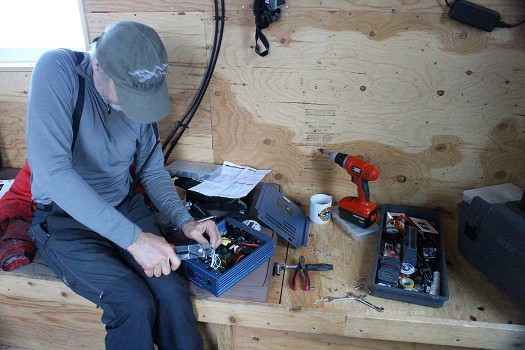
Back at the Port-a-hut, I embrace career #1047, off-the-grid electrician. I'm attempting to lash up a webcam that doesn't require a human. We don't have enough power to run everything continuously, so here I'm wiring a timer to the inverter on-off switch. I got that working well. Challenge of doing a power lean webcam system seems to be Bill Gates, as in getting Windows computer to enter and exit standby mode and send webcam photos without human intervention. I'll work on this more in December and report back. Need to go skiing now.
And a shout-out to Steve at Sunsense Solar here in Carbondale, Colorado. As always Steve, thanks for helping out.
WildSnow.com publisher emeritus and founder Lou (Louis Dawson) has a 50+ years career in climbing, backcountry skiing and ski mountaineering. He was the first person in history to ski down all 54 Colorado 14,000-foot peaks, has authored numerous books about about backcountry skiing, and has skied from the summit of Denali in Alaska, North America’s highest mountain.

